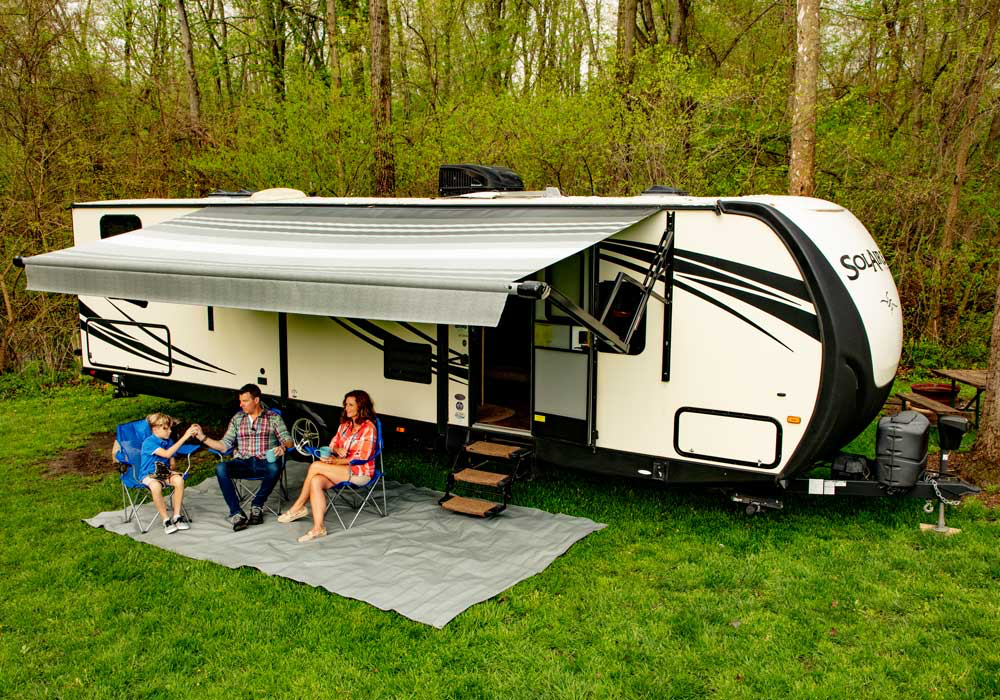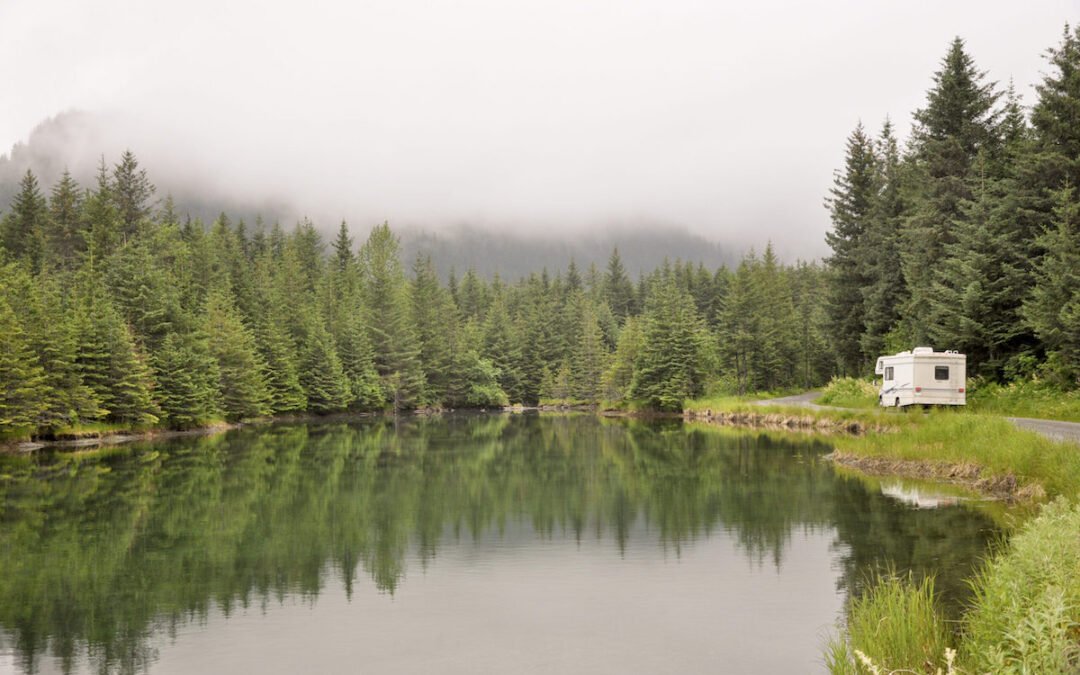RV awnings help enhance your travel experience and transform your RV into a home, providing an expanded living space while shielding you from overbearing, often brutal sun rays.
They are such a fundamental aspect of the RV lifestyle that it’s nearly impossible to visualize the ideal campsite without picturing a comfortable, lounge-worthy patio area set up underneath an extended awning, complete with cold drinks and a place to put your feet up.
Just like all
RV accessories, deploying proper maintenance and care methods is the key to extending the life of your RV awning. One of the biggest factors in keeping your awning in great shape is knowing how to best care for it in various weather conditions. If you’re one of the brave RVers who travels year-round, you probably know that each season comes with its own set of unique challenges.
Sun, wind, rain, and snow can all pose threats to the health of your RV awning. To help you mitigate any potential damage, here are a few tips on how to best care for your awning through the elements:
Protect RV Awnings From Sun and Heat-Related Damage
Even though
RV awnings are designed to be out during periods when it’s extremely hot and sunny, it’s still important to take proper precautions. Ultraviolet rays can lead to fabric discoloration and fading, and eventually the fabric can weaken and break down.
The good news is that there are many
RV awning fabric protectors on the market. From sealants to covers, you’ll be able to protect your awning from sun and heat-related damage. If you plan to be away from your campsite for most of the day, you can also roll up your awning to avoid unnecessary sun exposure.
Avoid Leaving Your Awning Out During Strong, Gusty Winds
Strong winds and RV awnings aren’t a good match for each other, a sentiment many unfortunate RVers have learned the hard way. High winds can cause the fabric to tear off of the track, and in severe cases, the entire awning can rip off of the RV. This can lead to expensive repairs or even an entire awning replacement, and it also poses a safety hazard to you and anyone around.
While the level of wind an awning can handle will depend on a variety of factors, including who the manufacturer is and what size and type of awning it is, it’s best to put your awning away if the wind is strong enough to make it flap around.
Using canopy clamps, tie-downs, and deflappers can help your awning better stand up to intense winds, but the safest thing you can do is roll up your awning if you plan to leave it unattended. Check the forecast ahead of time, and if strong winds are predicted, play it safe by retracting your awning
Remember, weather can change rapidly, and planning accordingly can help you avoid any wind-related hassle.
Minimize Your RV Awning’s Exposure to Rain and Moisture
Most RV awnings are designed to be able to handle a light drizzle, but just like with wind, too much rain and moisture can do some major damage.
An excess of rain can collect in the canopy of the awning, resulting in pooling and sagging. This can stretch out and ruin the fabric, and if it’s heavy enough, it can compromise the structural integrity of the hardware.
If you can easily adjust your awning arms so that it tilts, this can help the water run off instead of collecting in the canopy. Some electric models are created to automatically dump water before it gets heavy enough to damage the awning. However, the best way to keep your awning safe is to retract your awning during any period when heavy rain is present or expected.
In general, moisture is something you want to keep away from your RV awning, which is why you want to allow it to completely dry before rolling it up. Rolling up your awning while it’s wet creates the perfect breeding ground for mold and mildew, especially in humid climates.
In some instances, it will be necessary to retract your awning while it’s still damp (e.g., rolling up your awning to protect it from intense rain and wind). When this happens, extend it as soon as you are able, and let it air dry fully before re-rolling it.
Be Mindful of How Cold Conditions Affect Awnings
The warmer months may make up prime RV season, but that doesn’t mean there aren’t benefits to RVing in cooler temperatures. You get to experience peaceful, uncrowded campgrounds without having to worry about pesky bugs or excessive heat.
That being said, it’s important to be mindful of how colder conditions will affect your RV awning. Never let snow or ice accumulate on your awning, as the weight can build quickly, weakening the structural integrity. If it gets too cold, it can also be difficult to retract.
If heavy snow or frigid temperatures are expected, it’s a good idea to retract your awning. If you’re RVing in winter, you’ll fare better if you put your awning away when you leave your campsite and when you go to bed. This way, it will stay safe in the event that an unexpected storm rolls in.
Takeaway Points
Because RV awnings are an exterior accessory, they are frequently exposed to the unpredictable forces of Mother Nature. A quality product will be able to handle its fair share of the elements, but in order to best preserve your awning, research weather conditions in advance and don’t leave your awning unattended for long periods of time. If you do your due diligence in protecting your awning, you’ll be able to indulge in shade and comfort for years to come.
Contact Carefree of Colorado For Any of Your RV Awning Needs
Carefree of Colorado has been a leading provider of RV awnings since 1971. Whether you’re in need of a new awning, any RV awning replacement parts, or some stylish accessories, we’ve got it covered.
As an innovative provider of RV shade products, our goal is to blend quality, value, performance, and style to deliver a truly exceptional RV experience.
If we can help you in any way,
get in touch! We’d love to hear from you.

